Whether you went to college to study web design or you simply have a passion for this profession and learned everything on your own, the desire of wanting to enhance your skills is always great to have.
In this post, we want to make things easier for you and share the top tips for making you a better web designer that has a lot of opportunities to land their dream client.
1. Plan In Advance

Being a great web designer involves many different things like practicing a lot, knowing the basics of design as well as proper planning your web designs. This means, managing your project from start to finish, determining goals, milestones, budget, and more to ensure you and the client are on the right track.
Running your web design business is as important as being a good web designer, which is why using special tools for this can be of great help. The website design planning template allows you to supervise your tasks through a Gantt chart, click here to easily get it and start working right away.
2. Practice Daily
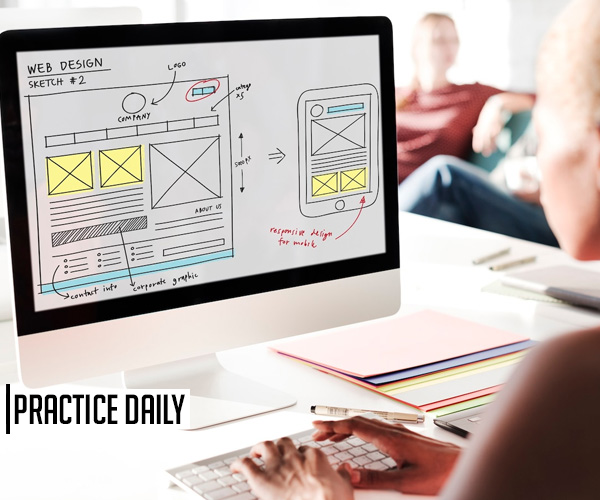
As with any craft, web design needs a daily dose of practice, therefore if you’re looking to enhance your skills you should create a new design or brainstorm ideas frequently. You can use the internet as inspiration or look around you to find hidden designs in everyday situations.
Apart from this, you can find loads of tutorials either in pictures or videos to learn new things and first-hand tips and tricks. The thing with tutorials is that they allow you to learn about current trends and how to apply them to your specific projects to level up the results.
3. Start Simple
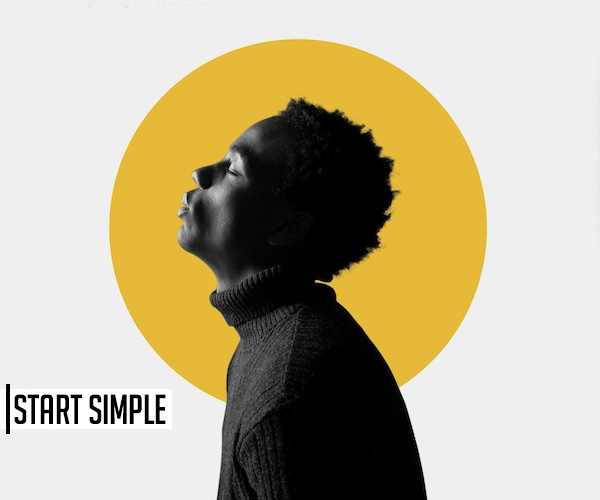
One of the most important things about web design is to start simple, and then begin to add details and gadgets that will make the user experience better. Something to have in mind when website designing is to start with shades of gray, black, and white, to later add pops of color according to what you’d like the viewer to focus on.
This will make things easier for you when designing as well as when planning where to begin with your new design. Sometimes, wanting to color everything at first makes things turn into a little mess, which is why starting simple and with grayscale colors is recommended.
4. Go Back To The Sketchbook
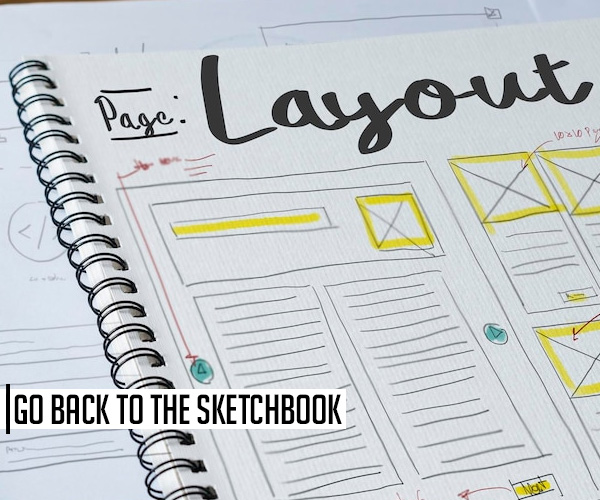
As a web designer, organizing, planning, drawing, and designing all at once or on the computer can present a challenge, especially if you’re someone who’s constantly visualizing ideas and need to quickly sketch them to not forget them.
Using a sketchbook is a great thing to have in mind if you want to throw all your ideas at once at a rapid speed and later go over them to add details. Further, you can take your sketchbook wherever you go, and any time you feel inspired you can quickly draw what’s on your mind.
5. Think About What Your Audience Prefers

Sometimes, web designers tend to be carried out by our thoughts and innovative ideas and forget about what the audience prefers. For example, using too many carousels or slideshows to display a lot of information, usually makes the reader tired of just even thinking about looking at that part of the website.
Having in mind what type of website you’re designing and what the target audience of that niche prefers is essential to make you a better web designer in no time.
Apart from this, users prefer to have straight-to-the-point information when possible instead of long introductory paragraphs, so when possible, try incorporating this in your design.
6. Study Other Websites

Taking a look at what other web designers are doing is a great way to learn and see what’s working and what isn’t, in terms of user experience, marketing, and more.
Think about what you like and don’t like about the websites you visit as well as which colors are used, how they’re displaying information (and how much information there is), etc. You can view the source code for a feature you like and later replicate it to practice how to do it.
7. Use Social Media For Inspiration
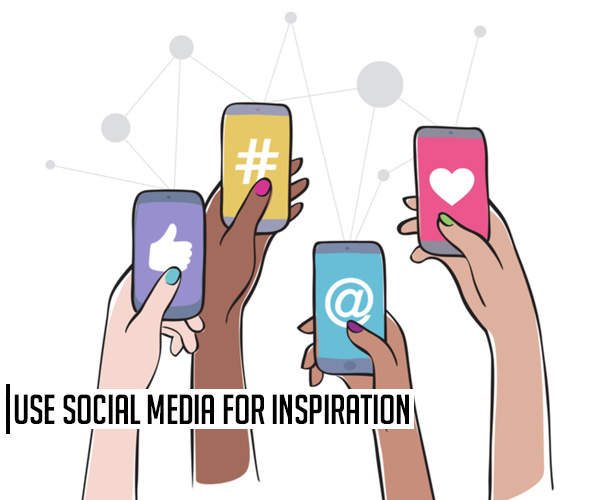
Social media has become the number one source of inspiration for web design, and you’d be surprised how many designs and ideas you can find on various platforms like Pinterest and Instagram with their tutorials.
Having a folder with everything that inspires you will help you have a constant source of inspiration when you need to sit down and design a website. Further, as you save and browse through certain types of designs, these social media platforms start showing you related images thanks to the personalized algorithm.
8. High-Quality Images For The Win

Using high-quality images makes the biggest difference, and if you have the chance, you should definitely add some to your site.
If you only find images with the lowest quality ever, try to avoid adding them thus it will make your website look amateur-made (even if you’re an amateur, you should stay away from these types of images since users will not think of your website as a serious site).
There are some great image banks that you can browse to find quality images, and for those who can’t afford license-free images, don’t worry, there are still places where you can easily download the best images for free. You only need to credit the owner of the image.
9. Learn Slowly
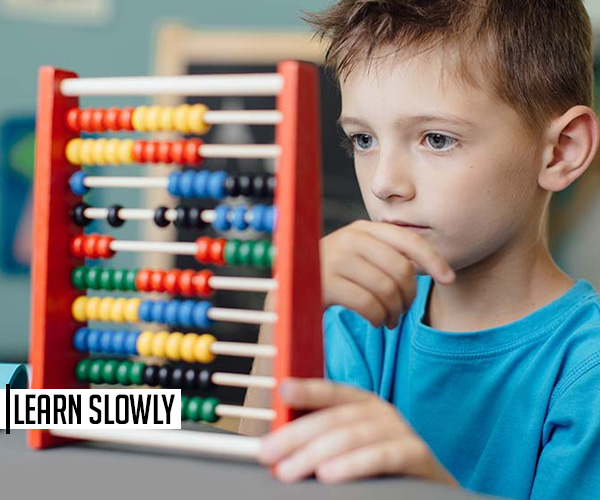
Learning all at once is not possible, and will only result in having little information about everything. Instead, focus on learning one skill or topic at a time, and once you’ve perfected it or learned every aspect of it, move on to another one.
If you’re excited to learn new things but feel a bit overwhelmed about the amount of information available, try creating a study or practice plan where you break down what you want to learn in small daily or weekly tasks. This way, you’ll ensure you cover everything you need to know at a nice pace.
10. Connect With Other Web Designers

A big part of becoming a better web designer is to connect with peers, this way you can take a look at what they’re doing to find inspiration, ask for advice on a problem you’re trying to solve, find new job opportunities, and more.
You can study other designers’ portfolios and expand yours, and this is not just about showcasing your previous projects but also how to properly do it to attract the client’s attention.
As a web designer, it is equally important to be good at designing as well as showcasing your work.
11. If Something Is Not Working, Try Again Later

Burnout is a real struggle, especially if you’ve been working on the same thing for hours and hours. Your eyes start to get tired, your head starts to hurt and your mood is simply not the best after a long day of trying something new.
When this happens, take a break, do something to distract your mind and then go back again. You can also leave it for the next day if you feel super exhausted.
Perfecting your web design skills takes time, and to prevent you start hating what you do just because you’re tired, allow yourself to take some time off to recharge your batteries and try again at another time. This will also help with coming up with solutions to a problem you’re struggling to solve.
12. Use Simple Tools For Sample Websites
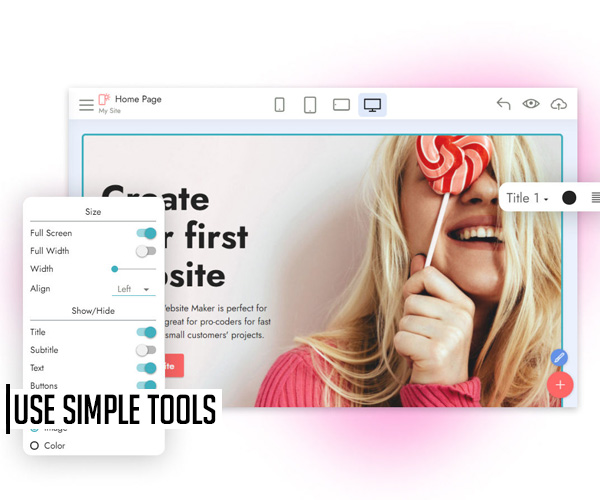
You landed a job opportunity and were asked to create a sample website, congratulations! This is an exciting part but you should be mindful of your time and resources when creating a sample.
This means although you want to create the best website sample for your client to showcase your work, stick to using simple tools and explain your ideas in a brief paragraph or conversation if you can.
Simplifying your approach will make things easier and faster for you, enhancing your productivity and your possibility to go into details of your design with a client.
Become A Better Web Designer

In this post, we shared the top 12 tips to become a better web designer with quality skills under your sleeve. We covered topics such as the basics of web design, what to focus on when landing a client, managing your projects easily and efficiently, as well as how to find inspiration, and more.
In essence, the most important things to have in mind when looking to become a better web designer are learning constantly, focusing on big things and later adding details, showcasing your work properly, taking a look at what others are doing and how their target audience is responding and, most importantly, placing yourself as a user and exploring websites.
 The post 12 Tips to Make You a Better Web Designer first appeared on Graphic Design Junction.
The post 12 Tips to Make You a Better Web Designer first appeared on Graphic Design Junction.Courtesy: https://graphicdesignjunction.com/2022/10/12-tips-to-make-you-a-better-web-designer/






